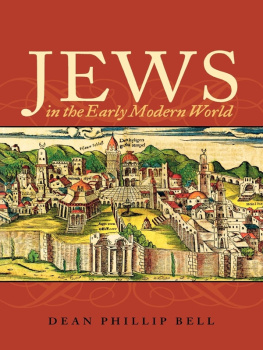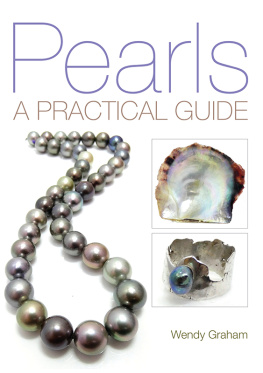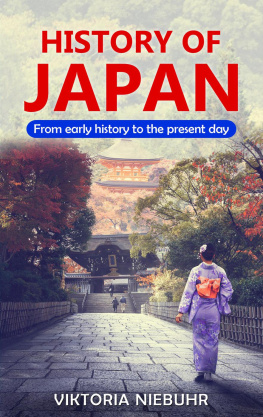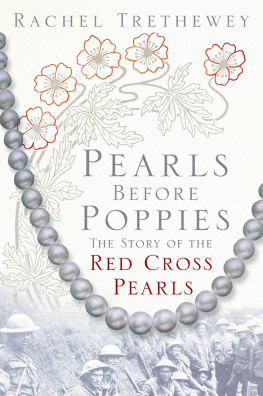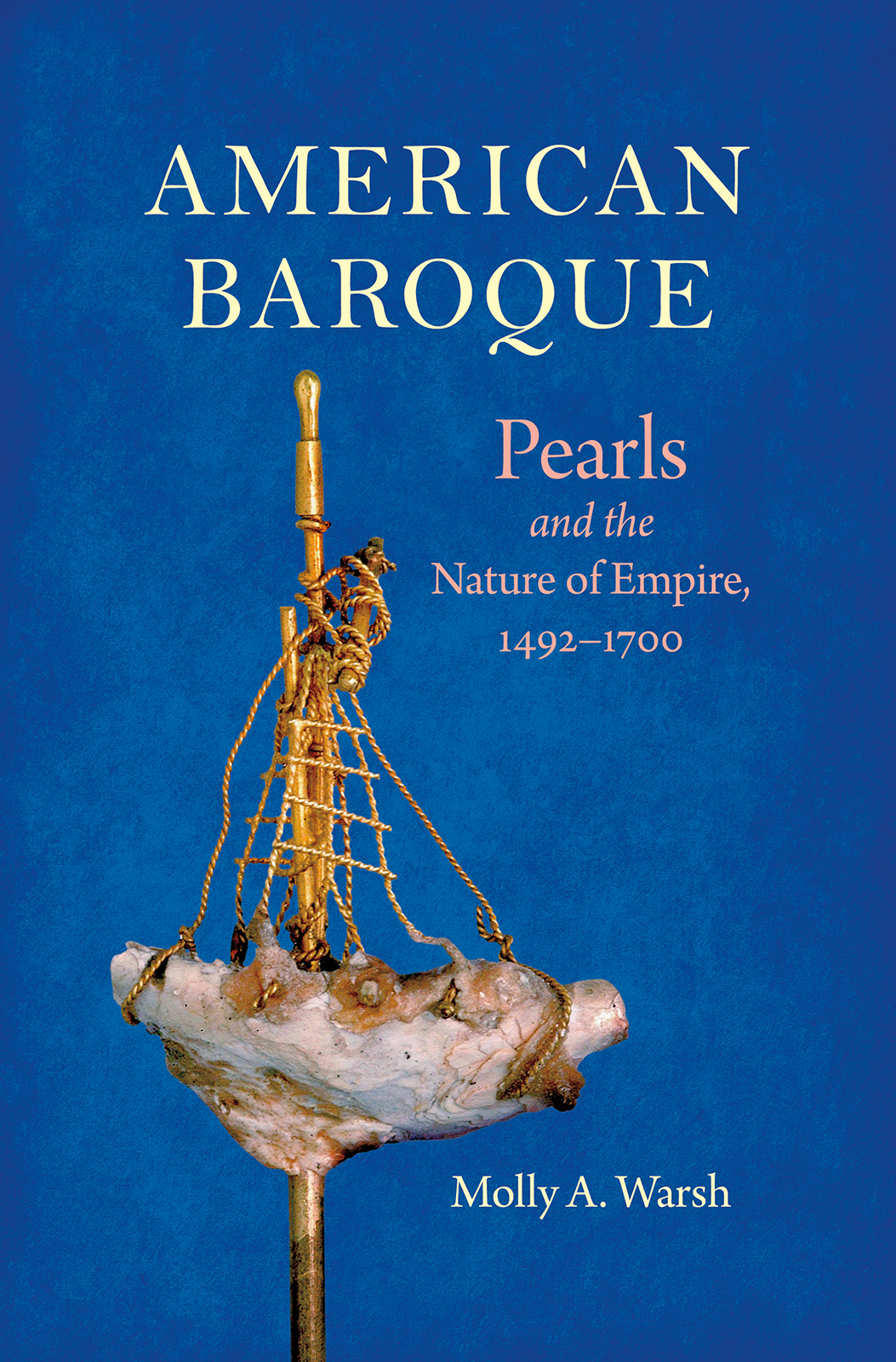Cover illustration: Baroque Pearl Boat Hatpin. Circa 1500. Museum of London
Subjects: LCSH: Pearl industry and tradeCaribbean AreaHistory16th century. | Pearl industry and tradeCaribbean AreaHistory17th century. | SpainColoniesHistory16th century. | SpainColoniesHistory17th century. | PearlsPolitical aspectsHistory.
Classification: LCC HD9678.P42 C278 2018 | DDC 338.3/7140972909031dc23 LC record available at https://lccn.loc.gov/2017042775
The University of North Carolina Press has been a member of the Green Press Initiative since 2003.
ACKNOWLEDGMENTS
This book evolved over the course of much of my adult life thus far. As it grew up, so did I. The innumerable debts I have accumulated in research and writing seem to me like the squares of a quilt, stitched together to make a vast blanket of warm support. Without this support, I would not be the person I am. And this book would be a different book, or no book at all.
My beloved family: Hope Tompkins, David Warsh, Lucy McGowan, Mark McGowan, my starburst nieces Avery and Sloane, my heart is too full of love and gratitude for words. Jon Rosenfeld, you enrich all our lives. My grandmother Annis Content Meade, how I wish we could catch up and I could hear you laugh as we shared stories. My husband Piotr Gwiazda, whose mind captures and distills all the magic and absurdity of the world and whose steadiness keeps our ship upright in the stormiest of seas, this book is for you.
The friends and mentors I met as an undergraduate at Cornell University and a graduate student at Johns Hopkins University are many and extraordinary. Mary Beth Norton, my fearless leader, you set me on this path as a freshman in college and have helped me and inspired me at every step of the way. At Johns Hopkins, Phil Morgan is a model of academic integrity, rigor, and generosity. He and Barbara Morgan are also dear friends. Richard Kagan, hispanista por excelencia, is a mentor as demanding as he is warm and welcoming. He and Shreve Simpson threw more wonderful dinner parties than I can remember, from Baltimore to Florence to Philadelphia. In Phil and Richard, I was fortunate to work with two stellar people who also happen to be stellar historians. My deepest thanks to you both.
The bulk of the research for this book was made possible by the generous support of the Jacob K. Javits Fellowship and additional funding from Johns Hopkins University. A Fulbright grant enabled a transformative year in Portugal. The Scottish Society of Antiquaries funded a much shorter but similarly critical research trip to Scotland. In addition to my supervisors, I benefited immensely from the wisdom and kindness of Sara Berry, Toby Ditz, Lou Galambos, Michael Johnson, and the late John Russell-Wood. Chris Brown has been friend and mentor from the earliest days as well. Jack P. Greene and Amy Bushnell, towering figures each, never let a weak idea go unchallenged, and I am tougher and more exacting for their bracing encouragement. The early Americanist / Atlantic cohort taught me how to get through seminars and recover afterward, but the network of Johns Hopkins friends goes far beyond that weekly Monday night gathering: Joe Adelman, Sarah Mulhall Adelman, Rich Bond, Dirk Bnker, Teresa Cribelli, Sara Damiano, Andrew Devereux, Stephanie Gamble, Claire Gherini, Jonathan Gienapp, Katie Jorgensen Gray, Amanda Herbert, Cole Jones, Kimberly Lynn, Lars Maishak, Andrew Miller, Catherine Molineux, Kate Moran, Kate Murphy, Greg OMalley, Nick Radburn, James Roberts, Justin Roberts, Jessica Roney, Erin Rowe, Leonard Sadosky, Carolyn Salomons, Katherine Smoak, Eran Shalev, Jessica Stern, Megan Zeller, and the late Andr Young. You have been cherished partners along this path.
My colleagues and friends at Texas A&M University gave me helpful feedback on this project as I was just beginning to transition from graduate school to being a professor. Andy Kirkendall, you are a great friend and DJ. Carlos Blanton, Cyndy Bouton, Walter Buenger, Glenn Chambers, Olga Dror, Kate Cart Engel, April Hatfield, Felipe Hinojosa, Angela Pulley Hudson, Priti Mishra, Ada Palmer, Jason Parker, Lisa Ramos, Jim Rosenheim, Rebecca Schloss, Adam Seipp, and Philip Smith, thank you for being so encouraging and kind. I am also grateful to Texas A&M for the grant from the Program to Enhance Scholarly and Creative Activities (PESCA), which enabled me to take a critical trip to Caracas, Margarita, Cubagua, and Coche in Venezuela. At the University of Pittsburgh, I have benefited enormously from my tireless and supportive chair, Lara Putnam, and the feedback and encouragement of my colleagues in the Department of History and beyond. In particular, Reid Andrews, Jonathan Arac, Olivia Bloechl, Molly Estes, Kathy Gibson, Laura Gotkowitz, Janelle Greenberg, Maurine Greenwald, Van Beck Hall, Diego Holstein, Holger Hoock, Patty Landon, Patrick Manning, Ted Muller, Tony Novosel, Marcus Rediker, Gayle Rogers, Rob Ruck, John Stoner, Gregor Thum, Grace Tomcho, Liann Tsoukas, and Bruce Venarde have gone out of their way to help and support me along the way. A Hewlett International Grant from the University Center for International Studies allowed my to deepen my engagement with the history of pearl fishing in Scotland and Sweden. Dean Cooper and Dean Knapp supported me and my work in more ways than one, including a generous grant from the Edwards Publication Fund for the books illustrations and maps. The Humanities Center at the University of Pittsburgh gave me a critical semester away from teaching when I was finishing the first draft of the book. Lili Caf in Polish Hill welcomes refugees and refugee writers: to Heidi, Mark, Catherine, and the whole neighborhood cast of characters, thank you for sharing your enchanted village. To the extended Pittsburgh crew: we sure hit the junior faculty sweet spot there for a minute. Pernille Rge and Vincent Leung, what a miracle to have landed in Pittsburgh with you two. Raja Adal, Elizabeth Archibald, Rob Bland, Robin Chapdelaine, Michell Chresfield, Niklas Frykman, Jennifer Josten, David Luesink, Jamie Miller, Abigail Owen, James Pickett, Patryk Reid, Philipp Stelzel, Mari Webel, Benno Weiner, Katja Wezel, Emily Winerock, you guys are the best.
The undergraduate and graduate students with whom I have had the privilege to work at Johns Hopkins, Texas A&M, and the University of Pittsburgh have challenged and inspired me. Their bright minds and spirits have often saved me from the loneliness of writing.
Like most historians, I owe an enormous debt of gratitude to more archivists than I could possibly name. I would like to extend particular thanks to Isabel Aguirre for getting me started in Simancas and to David Beasley of the Worshipful Company of Goldsmiths for his patience and generosity as I was learning my way around London and its treasures. Hazel Forsyth at the Museum of London introduced me to the Cheapside Hoard and the baroque pearl boat on the cover of the book. Edgar Samuel explained Sephardic London. In Lisbon, I learned so much from Nuno Vassallo e Silva at the Museu Calouste Gulbenkian. In Caracas, the Gonzlez-Siln family provided warm hospitality and many invaluable introductions. Toms Straka at the Universidad Catlica Andrs Bello was a generous academic host; among other things, he introduced me to Fidel Rodrguez Velsquez, in whom I have found the fellow sixteenth-century Cubagua enthusiast I have long been waiting for. In addition to the archival trips, the many conversations I have had at seminars and conferences along the way have helped me think more clearly about the project. I am very grateful to colleagues near and far for the numerous opportunities to present works in progress at their universities.


